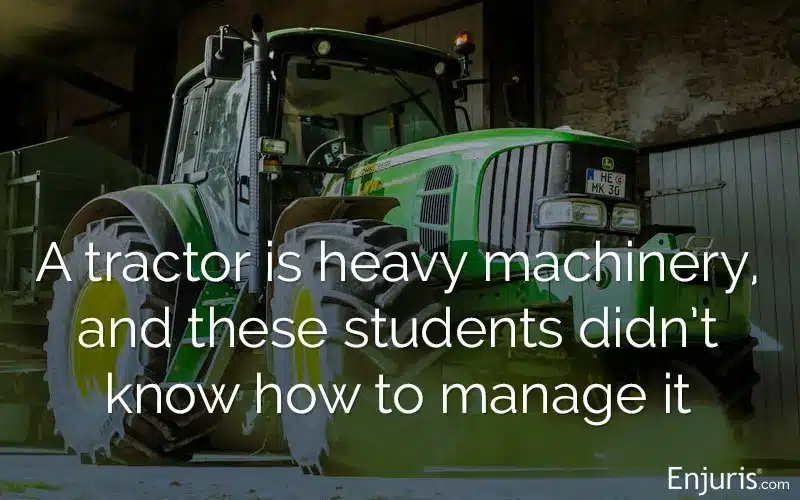
The Stables, a non-traditional high school in Lexington, Kentucky, is the site of an accident that has left Fayette County Public Schools facing a lawsuit.
In May 2023, a group of students were unsupervised while at the Kentucky Horse Park, where The Stables is located. At some point, according to the lawsuit, a commercial tractor became stuck in the mud.
The students took it upon themselves to attempt to dislodge the tractor from the mud, but when they tried to move the vehicle, Plaintiff Tracy Wells’ then-16-year-old son was struck. Another student used an all-terrain vehicle to drive the injured boy back to the school building, where the program director called 911.
The boy was in the hospital for six days. He was diagnosed with a crushing injury to his chest, hyperglycemia from trauma, increased bilirubin levels, contusion of the right lung and a closed fracture of multiple ribs on the left side, with other injuries.
The lawsuit alleges that the child continues to suffer pain and suffering, anxiety and depression resulting from the accident and that they require ongoing mental health treatment. In addition, his injuries prevented him from working at his planned summer job at the time, which eliminated the opportunity for future professional growth.
Was the school liable for the student’s injury?
The lawsuit claims that the school was reckless in allowing minors to handle commercial equipment without proper supervision. Further, students should be supervised at all times during school time or while engaged in school-based activities.
What is negligent supervision in a school setting?
A school is responsible for supervising students in a safe environment and must take reasonable measures to minimize hazards or danger to their safety or well-being.
Therefore, negligent supervision is failing to provide sufficient supervision in a given set of circumstances. In a classroom with young children, negligent supervision could be a teacher stepping into the hall for a moment to have a conversation while a student inside the classroom is running with scissors. In the lawsuit for Wells’ son, it’s about students being left with heavy and dangerous farm equipment without an adult to supervise.
There are a few factors that would influence what level of supervision is necessary:
- The students’ ages;
- The students’ level of experience in the particular setting or environment;
- Nature of the activity; and
- Factors beyond the control of the school or supervising adult.
How might this play out in actual events?
For example, kindergarteners would understandably require more supervision than high schoolers. Young children don’t have much common sense or impulse control, and a teacher should not leave them unattended, even for a few minutes. You never know if kindergarteners might decide to build a fort with classroom chairs, poke each other with pencils, or anything else their creative minds can dream up. However, it would be safer to assume that middle or high school-age students would know better than to engage in these types of activities if left to their own devices for a short time.
Even for younger children, if a teacher needs to step out for a moment, the risk is different for students who are having quiet reading time than students who are engaged in a physical game in PE, for example.
What factors would be beyond the control of the school or supervising adult?
An example of external factors that affect liability might be if students are off-site, such as a field trip or after-school program. Older students on a field trip can likely be in peer groups without constant adult supervision, given parameters of where they may go, what time they need to be back, and so on. But it would be unreasonable to set a group of elementary students “loose” in a museum or at a show because they might not be able to identify and avoid a dangerous situation, particularly if members of the public are present.
How to prove negligent supervision
Like other types of personal injury claims, negligent supervision relies on these elements:
- Did a duty of care exist?
- Did the liable party breach their duty of care?
- Did that breach cause an injury?
- Did that injury lead to financial loss?
If the facts support these conclusions, then the defendant could be found liable for the injury. In the instance involving the tractor accident, it would seem clear that the school had a duty of care to the injured student and that duty was breached when there was no adult supervision present around heavy machinery. If it’s proven that the accident would not have happened if the school had properly supervised the students, and if it’s proven that the student’s injuries were caused by the lack of supervision, the school could be found liable.
